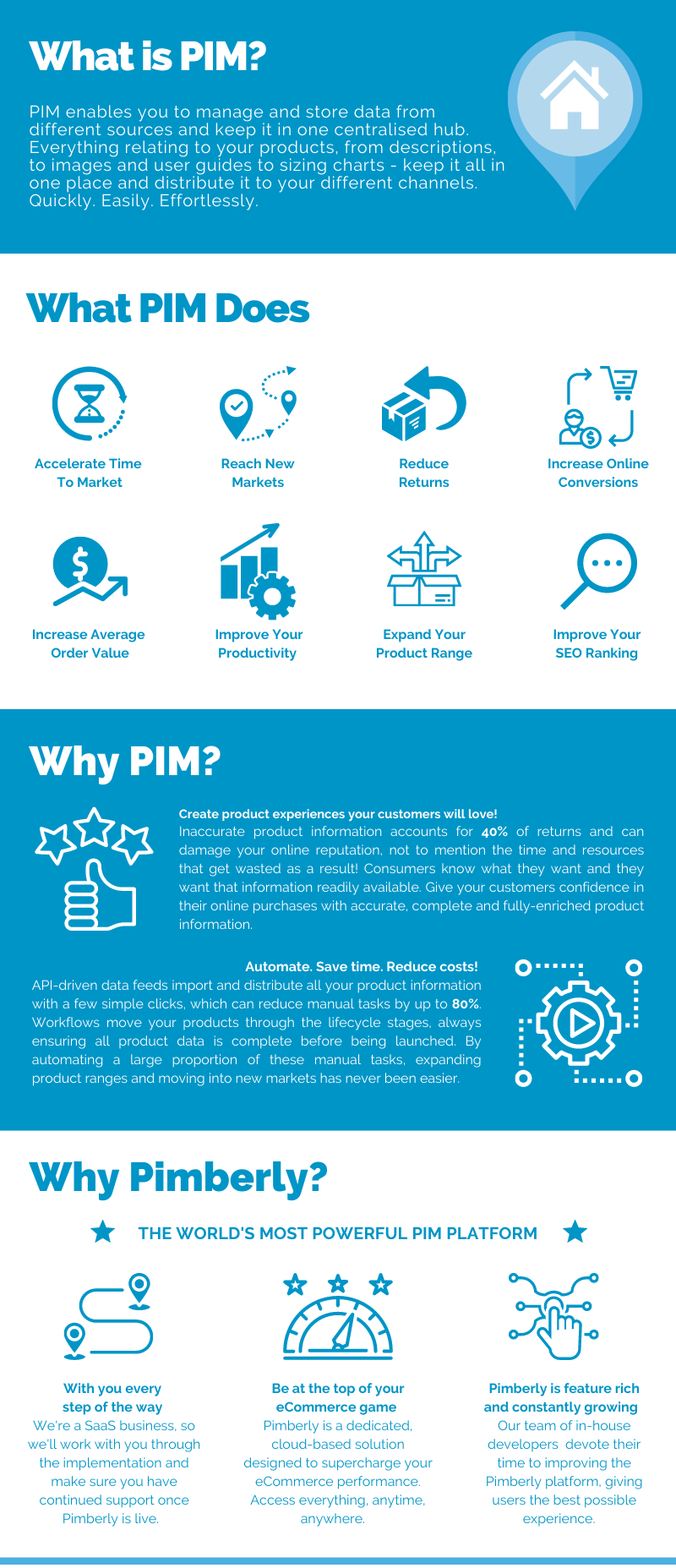What Is Model Context Protocol (MCP)?
Model Context Protocol (MCP) is a framework for structuring product data and its contextual relationships so AI agents—like ChatGPT, Amazon Rufus, or Google Gemini—can interpret...
Published: Oct 24, 2022 Updated: Dec 13, 2023
What is Product Information Management (PIM) and how will it benefit your business? If you sell online, you’re likely dealing with large volumes of complex product data. When this is the case, you need a solid solution to manage product data in an efficient way. That’s where a PIM system comes into play.
In short, a Product Information Management system enables you to gather, store, enrich, and distribute all product data across your sales channels with ease and speed. All in all, your PIM holds all the data required to effectively market and sell products online. Moreover, you can automate up to 80% of manual tasks, making the process of managing product data much more streamlined. So, how does PIM work? Read on to find out!
You have massive storage capabilities with PIM systems. As a result, you can store a whole host of data. Here’s an overview of what you can store and manage within your PIM system:
To add to that, you can store data in multiple languages if selling across multiple geographies. Overall, having centralized product data means you always have full visibility of the accuracy and completeness so you can deliver the best experiences to ensure customer satisfaction every step of the way.
Understanding PIM enables you to get the best use of it across the business. Consequently, this promotes a more collaborative way of working. Here’s an overview of the different teams who will use PIM:
If you’re managing multiple product lines across several different sales channels, it can be a difficult process to manage. Therefore, being able to streamline that process is key in enabling you to focus on wider business objectives, which is a key advantage of PIM.
Overall, here are some of the things you’ll gain with PIM functionality:
Here’s our Infographic that gives an overview of what you can achieve with a top PIM software solution like Pimberly:



